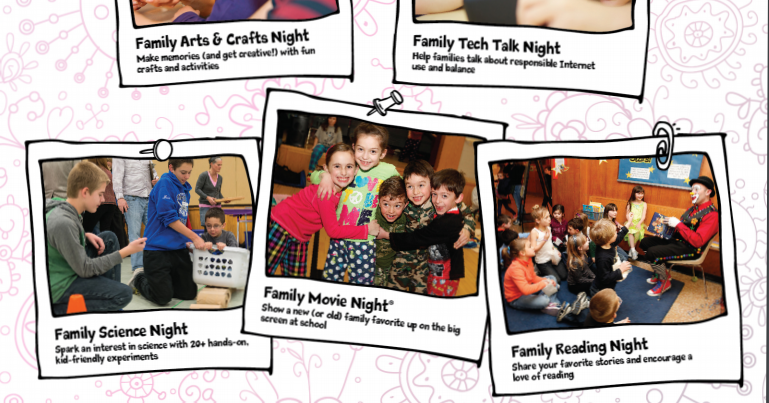8 Hacks to Increase Student Enrollment & Retention
Hack #4
Get Noticed - Communications
A successful marketing plan consists of three high level efforts.
Planning/Strategy
Execution
Follow Up
In our previous “hacks”, we fueled our planning/strategy efforts by identifying the value and message of our school as well understanding the needs of our target audience. To recap:
In this edition, Hack #4 involves mastering your communications channels. With a strong message of value and clear idea of who benefits, you are now positioned to master your communications channels and execute your message to the appropriate families.
The journey to increasing applications typically begins with bringing visitors or, foot traffic, through your doors. Naturally, communicating opportunities to visit your school is a crucial step. With that in mind, evaluating and utilizing the available channels will ensure your message is spread as far as possible and yields the highest results. We will review a number of typical channels. However, you may have access to others not mentioned that should most certainly be utilized to aid your effort.
In our previous post, we stressed the importance of reaching families with needs similar to that of your current families. In that effort, leaders work to communicate to current families that theirs is an environment of community, where friends and families are welcomed and encouraged to participate in school activities. Whenever possible, incorporate incentives to current families for bringing guests to school events. Incentives can include pizza parties to the class with the most guests, dress down days, or extra recess/activity time.
Besides incentives, getting your parents involved in the event accomplishes several things:
Parents who help the school feel a sense of belonging
Parents who are invested in the event, want to make it successful
Involved parents are going to be natural social media conduits
A group of parents pursuing a common goal creates energy.
A successful ministry leader once said, “It takes seven different touches to reach your audience before it sinks in”. Although seven may not be the magic number, the idea is that people respond differently to “advertising”. Some respond better to audio, visual and tactile! Marketing through all these channels will ensure that your message will be received in one form or another.
School Announcements
Likely the most accessible and easily implemented communication channel is that of internal school announcements via P.A. system, during registration, monthly principal’s newsletter and handouts for students to take home. Utilizing these channels to share the dates of upcoming events and the key details are a great first start to building awareness in your efforts and encouraging attendance. As you plan these communications, share the key items of value that people will experience from the event as well broaden the invitation to extended family and friends in the effort to reach people who could similarly be served by the offerings of your school. Some registration systems like K-12 Online have an area for Announcements which has proven very effective at the beginning of the school year for parents to input all the main upcoming events of the school into their calendars.
Website
Create a dedicated page of your event with eye catching images and an easy way to share this page on social media. The main landing page should the marketing page. From that page, buttons or hyperlinks can be added to share information of how parents can get involved with the event and who to contact. Do not overload your landing page with too much information. It should resemble a simple flyer that parents can use as a marketing piece. This page should also have its own dedicated URL so parents can easily text or email the event to others.
Email
With a clear message, share upcoming events with those subscribed to your email list. Provide clear details on the benefits of the upcoming events. When possible, provide opportunity for online registration so that you can begin to build out your database of prospective families to identify opportunities to serve and opportunities for relevant follow up discussions.
Social Media
Often underutilized, sharing news of your events via social media provides great opportunity for exposure to a broader network of families. One of the key benefits of social media that is overlooked is that most people do not encourage engagement on their postings. For example, many schools simply post that an event is taking place and struggle to generate “likes” or comments since there is no requested action. In light of this, when you post about upcoming events, encourage your followers to “like” this post if they plan to attend or encourage comments such as “what are you most looking forward to experiencing?” This type of ongoing activity on your posts helps ensure they rise to the top of recipients social media feeds and keeps your message active and relevant. Additionally, promoting shares or retweets will ensure your message reaches the circles of your current followers that you would not otherwise be able to reach. Incentivizing shares or retweets with giveaways or prizes will further encourage engagement. For example, “like and share this message for a chance to win a free [YOUR SCHOOL] sweatshirt” or something similar, will help your message reach broader audiences.
Direct Reach Out
When determining which audience can most benefit from the offerings of your school, consider that you will likely identify more than one actual audience. The select benefits of your school can differ depending on which audience you are targeting. For that reason, craft unique, personalized messages to potential audiences, specific to how their needs can be addressed by the services of your school. Within this effort, identify the proper stakeholder or “gatekeeper” at any targeted groups or institutions to effectively establish a trusting relationship and create advocates for your school.
Your Parent Organization
Most schools have a PTA, PTO, Mom’s Club, Dad’s Club. Parents who participate in these groups are your active and strong advocates. Meet with the organization’s leadership, explain the purpose of the event and ask their help in promotion. Sometimes getting them involved in the event not only makes them feel invested, but also lightens the workload...killing two birds with one stone! On the other hand, something as easy as encouraging all the parents to send or text the event to their friend circle will go a long way. Since undoubtedly, their friends circle would be other parents who would have similar interests.
As we previously identified, potential audiences could include:
- Child Care or Early Learning Centers
- Neighboring churches without companion schools
- Area community organizations
For the above audience, offer to provide a “print-ready” copy of the event so all they need to do is insert it into their bulletin, newsletter etc. without much effort. The less work for them, the better!
With your strategy in place and your execution under way, you are well positioned to welcome a broad audience to your scheduled events. In our next “hack” we will examine the final channel of paid advertising to further reach families that might share the interests of your target audience.
















 proximately 6,000 – 10,000 students in the state, respectively, are attending a school that is not within the district of their actual residency. Ironically, budget cuts at the state and local levels are forcing districts to ensure that all enrolled students meet residency requirements.
proximately 6,000 – 10,000 students in the state, respectively, are attending a school that is not within the district of their actual residency. Ironically, budget cuts at the state and local levels are forcing districts to ensure that all enrolled students meet residency requirements.